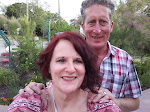
According to a report released by the Centers for Disease Control and Prevention, kids 12 to 17 years old are four times as likely to take an antidepressant than they were 20 years ago. Girls are 2 1/2 times as likely to be prescribed antidepressants. Here's a look at statistics on pediatric antidepressant usage and considerations for parents in seeking treatment for kids with MDE (major depressive episodes), mood disorders or depression.
Fewer kids, more antidepressants
In 1988, less than 1 percent of teens were prescribed an antidepressant. Now, 3.7 percent of those 12 to 17 take one. 11 million children younger than 19 are on anxiety or depression meds. Contrast this increase with the fact the overall percentage of the population in this age category has dropped. In 1964, 36 percent of Americans were in the 0-17 age range (about 9 percent were 12-17). Now, children account for about 24 percent. There are fewer children in the U.S., but more medicated for depression.
Antidepressants up, Major Depressive Episodes down for kids
The criteria for antidepressant prescription comes from a patient-reported survey, the PHQ-9. Patients rate the severity of mood issues: sadness, irritability, apathy, joylessness, guilt and worthlessness. Other questions deal with thoughts of death or suicide, inability to concentrate, difficulty making decisions, fatigue, lack of energy, feeling restless or slowed down, changes in sleep, appetite, and activity levels. High incidence in any one of these categories is called an MDE (Major Depressive Episode). The number of MDEs in children has dropped for most age categories and both genders. Fewer children are reporting MDEs, but more are medicated for them.
Antidepressants without clinical evaluations, therapy
The CDC report says that less than one-third of adolescents taking an antidepressant, have been seen by a physician within the last year. Eight percent of those taking antidepressants didn't have symptoms of depression. This bears out studies which show that many kids get antidepressants, without adequate clinical or psychological support, therapy or counseling. As reported by insurance companies, less than half of kids on anantidepressant also see a therapist. Older kids are more likely to exhibit depression that younger kids, but they received counseling less often. The percentage is dropping annually. ChildStats says that the percentage of children with MDE who actually discuss the depressive episode with a physician or counselor has declined as well. 40 percent received psychological treatment in 2005 and only 35 percent in 2009.
FDA warns against SSRI antidepressants for teens and kids
The FDA began posting black-box warnings on SSRI (Selective Serotonin Reuptake Inhibitor) antidepressants because they have been linked to "anxiety, agitation, panic attacks, insomnia, irritability, hostility, impulsivity, akathisia (severe restlessness), hypomania, and mania" (many of the symptoms parents give the drug for, ironcially). The FDA issued a specific cautionary warning about SSRIs used to treat pediatric patients. Symptoms tend to show up more with younger patients, and new antidepressant patients, primarily children. The onset for these symptoms in usually within the first two months of use. The FDA urges parents and health care providers to monitor children on antidepressants and to discontinue use if depression symptoms worsen.
